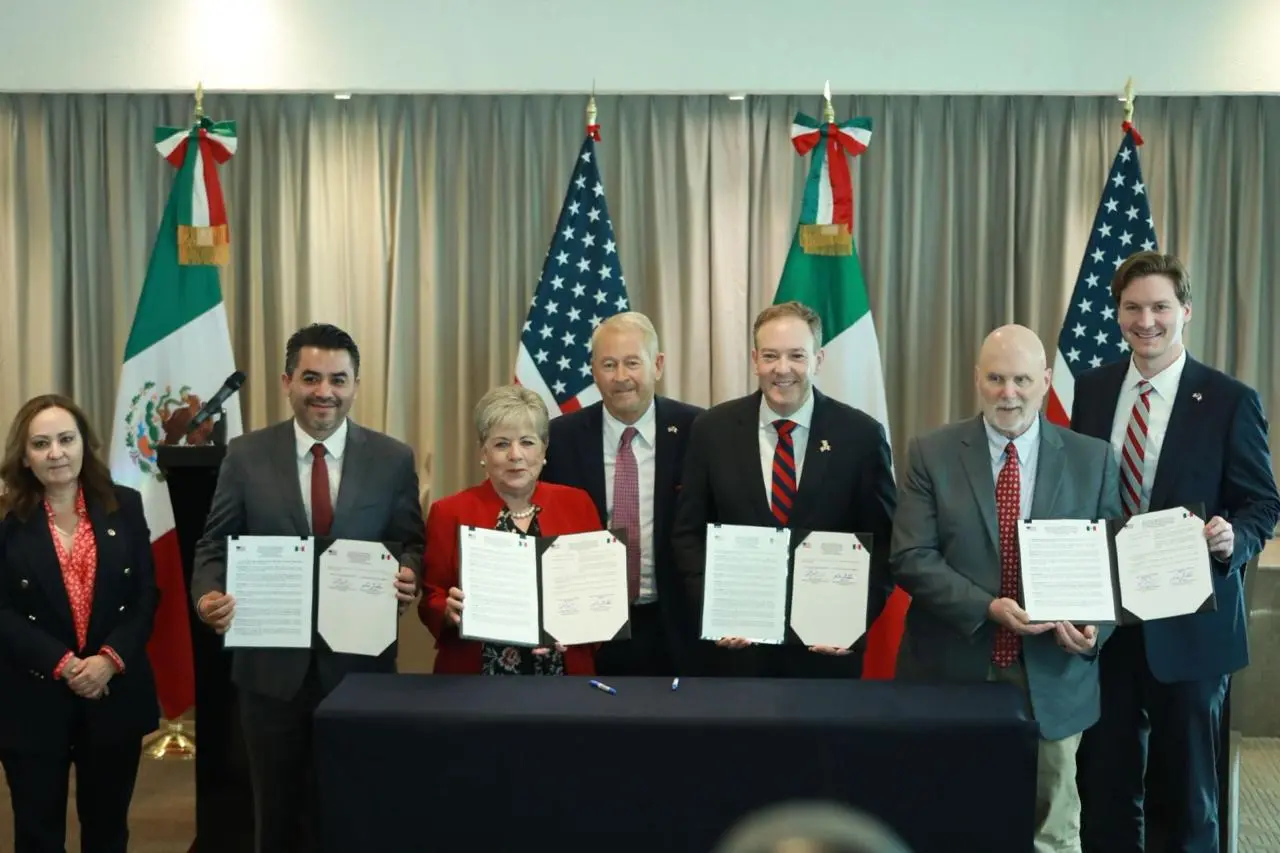
In a development described as “historic” by environmental authorities, Mexico and the United States signed a bilateral Memorandum of Understanding to address the clean-up of the Tijuana River—a long-standing issue, nearly a century old, that has severely impacted border communities.
During President Claudia Sheinbaum Pardo’s morning press conference on July 25, the head of Mexico’s Ministry of Environment and Natural Resources (SEMARNAT), Alicia Bárcena, announced that the agreement had been signed a day earlier, on July 24, with the U.S. Environmental Protection Agency (EPA).
“Cleaning up the Tijuana River is a binational priority, an urgent matter of public health and environmental restoration,” Bárcena emphasized as she outlined the agreement’s scope.
The agreement is based on three fundamental pillars: strengthening binational cooperation; reaffirming and accelerating commitments under Minute 328 of the International Boundary and Water Commission (IBWC); and exploring the expansion of the San Antonio de los Buenos treatment plant in Tijuana.
Key commitments include:
• Accelerating compliance with Minute 328, with resources already allocated for 10 infrastructure projects in Mexico (2026–2027), and completing U.S. projects by 2028.
• Prioritizing the movement of treated water from the Arturo Herrera and La Morita plants upstream to the Abelardo Rodríguez dam, rather than discharging it directly into the river.
• Requesting funding from the North American Development Bank (NADB) for projects such as Arturo Herrera and La Morita.
• Expanding the wastewater treatment capacity of the South Bay International Treatment Plant in San Diego (from 25 MGD to 35 MGD).
• Evaluating the technical feasibility of expanding the San Antonio de los Buenos plant in Tijuana, with potential U.S. co-financing through NADB.
As part of the memorandum, 17 strategic projects were agreed upon, with a total investment of $802 million USD. These include the expansion of the international treatment plant in San Ysidro, California, and the construction of 10 sewer lines, 3 wastewater treatment plants, and 3 pumping stations in Mexico.
Mexico has already completed five projects under Minute 328, including the construction of pumping stations and rehabilitation of sewer lines. However, 13 actions remain pending, including the expansion of the San Antonio de los Buenos plant, estimated at $67 million USD.
Efraín Morales, head of Mexico’s National Water Commission (CONAGUA), noted that the memorandum identifies 13 priority water infrastructure and sanitation projects, with an estimated investment of $693 million USD between 2026 and 2027.
To date, the Mexican government has invested slightly under 1.13 billion pesos (US$60.80 million) in five key projects, reaffirming its national commitment to this binational agenda.
Finally, Bárcena announced that on July 25, a tri-national environmental meeting will be held between Mexico, Canada, and the United States, covering topics such as circular economy, mine site remediation, solid waste governance, and the protection of biodiversity—particularly key migratory species.
Related: Mexican Government Considers Sanctions Against SpaceX for Environmental Damage in Territorial Waters
Mexican Press Agency is part of ALMA, which is dedicated to news and information about Mexico and Mexicans in the United States and is a fiscally sponsored project of Social Focus, a 501(c)(3) nonprofit organization based in Redwood City, California.